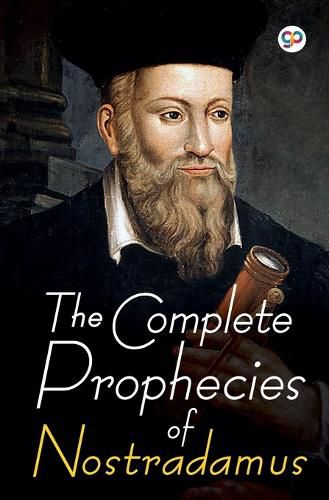Readings Newsletter
Become a Readings Member to make your shopping experience even easier.
Sign in or sign up for free!
You’re not far away from qualifying for FREE standard shipping within Australia
You’ve qualified for FREE standard shipping within Australia
The cart is loading…






This title is printed to order. This book may have been self-published. If so, we cannot guarantee the quality of the content. In the main most books will have gone through the editing process however some may not. We therefore suggest that you be aware of this before ordering this book. If in doubt check either the author or publisher’s details as we are unable to accept any returns unless they are faulty. Please contact us if you have any questions.
Nostradamus (Michel de Nostradame) was born on December 14, 1503 in St. Remy, Provence, France. Nostradamus came from a long line of Jewish doctors and scholars. He is considered by many as one of the most famous and important writers of history prophecies. He is famous mainly for his book ‘The Prophecies, ’ consisting of quarantine in rhyme. Supporters of the trustworthiness of these prophecies attribute to Nostradamus the ability to predict an incredible number of events in world history, including the French Revolution, the Atomic bomb, the rise to power of Adolf Hitler and the attacks of 11 September 2001. However, no one has ever proved that Nostradamus’s quarters can provide reliable data for the foreseeable future.
Nostradamus had the visions which he later recorded in verse while staring into water or flame late at night, sometimes aided by herbal stimulants, while sitting on a brass tripod. The resulting quatrains (four line verses) are oblique and elliptical, and use puns, anagrams and allegorical imagery. Most of the quatrains are open to multiple interpretations, and some make no sense whatsoever. Some of them are chilling, literal descriptions of events, giving specific or near-specific names, geographic locations, astrological configurations, and sometimes actual dates. It is this quality of both vagueness and specificity which allows each new generation to reinterpret Nostradamus.
$9.00 standard shipping within Australia
FREE standard shipping within Australia for orders over $100.00
Express & International shipping calculated at checkout
This title is printed to order. This book may have been self-published. If so, we cannot guarantee the quality of the content. In the main most books will have gone through the editing process however some may not. We therefore suggest that you be aware of this before ordering this book. If in doubt check either the author or publisher’s details as we are unable to accept any returns unless they are faulty. Please contact us if you have any questions.
Nostradamus (Michel de Nostradame) was born on December 14, 1503 in St. Remy, Provence, France. Nostradamus came from a long line of Jewish doctors and scholars. He is considered by many as one of the most famous and important writers of history prophecies. He is famous mainly for his book ‘The Prophecies, ’ consisting of quarantine in rhyme. Supporters of the trustworthiness of these prophecies attribute to Nostradamus the ability to predict an incredible number of events in world history, including the French Revolution, the Atomic bomb, the rise to power of Adolf Hitler and the attacks of 11 September 2001. However, no one has ever proved that Nostradamus’s quarters can provide reliable data for the foreseeable future.
Nostradamus had the visions which he later recorded in verse while staring into water or flame late at night, sometimes aided by herbal stimulants, while sitting on a brass tripod. The resulting quatrains (four line verses) are oblique and elliptical, and use puns, anagrams and allegorical imagery. Most of the quatrains are open to multiple interpretations, and some make no sense whatsoever. Some of them are chilling, literal descriptions of events, giving specific or near-specific names, geographic locations, astrological configurations, and sometimes actual dates. It is this quality of both vagueness and specificity which allows each new generation to reinterpret Nostradamus.